Fujifilm X-M1 Review:
The Fuji X Series mirrorless system has expanded quite a bit in the last year. I remember when the X-Pro1 was first released, some thought there just weren’t enough lens choices. Now, there are plenty of lenses to choose from along with many different accessories to customize these cameras to our liking. Along with new lens and accessory choices, there are also more camera bodies to choose from. For instance, adding to the mix is the X-M1: the latest camera from Fuji with the X-Pro1’s brilliant 16.3 MP X-Trans sensor.
Coming in at $699 ($799 for the body and kit lens), it’s the cheapest Fuji mirrorless body with the 16.3 MP X-Trans sensor found in the X-E1 and X-Pro1. This sounds very appealing but the Fuji X-M1 is also designed more for a broader audience than just for enthusiasts. For instance, Fuji has taken away the viewfinder, and replaced it with a tilt LCD screen. They have replaced the dedicated shutter speed control with an exposure mode dial. These features along with several others are some of the key features that have made the Fuji X Series bodies so popular, so if that’s the case, is the X-M1 worth buying over something like an X-E1? Does it have a place in the Fuji X Series lineup?
Fujifilm X-M1 Build Quality, Design and Controls:
Appearance wise, the Fuji X-M1 is a pretty nice looking camera. It has a retro yet modern look to it. It has a very clean appearance, which I prefer. It’s available in three color combinations: black, silver with black faux leather, and silver with tan faux leather. From the front, it actually looks like a smaller version of the X-E1. Plus, the X-M1 also has a pop up flash.
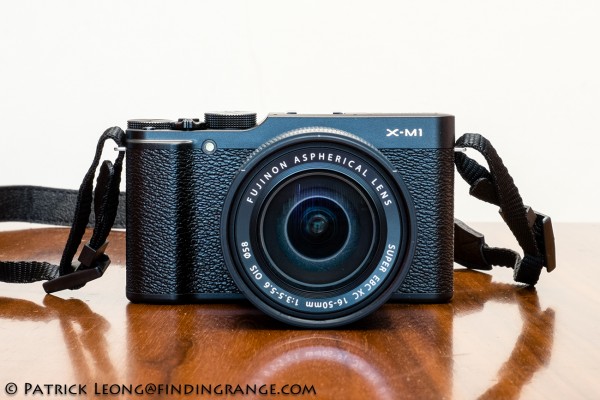
↑ Front view of the Fuji X-M1.
But unlike its older siblings, there’s a lot more plastic being used in the X-M1’s construction. This definitely makes it feel cheaper but don’t let the extra use of plastic deter you; other than it feeling a little hollow, it’s still is a well built camera that feels solid. The buttons still offer a very nice feel to them, and there’s no flex in the body. I’ve mounted my Leica 75 Summilux on it, which is a heavy lens, and there’s no structural issues with the X-M1 at all. Overall, it feels well put together. Because of the extra plastic, you also get a lighter camera. With battery and memory card, the X-M1 weights in at approximately 330g. That’s actually lighter than the X20, which weighs in at 353g (with battery and memory card).
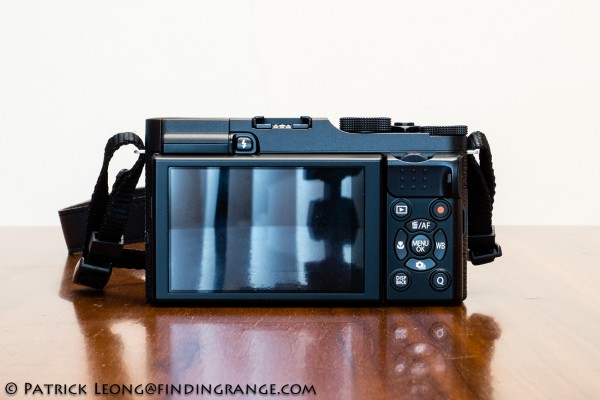
↑ Back view of the Fuji X-M1.
Speaking of the X20, the X-M1 isn’t actually that much bigger than it. I thought the X-E1 was a nice and small size but wow, I can’t believe how small the X-M1 is. To me, the size of the X-M1 is one of its most appealing features. Who doesn’t want a very small camera with image quality comparable to much larger, and more expensive cameras? Just imagine snapping on the XF 27mm F2.8 R lens to the X-M1, and running around the streets with it. You could easily fit it into a coat pocket, and be shooting with a camera that can produce image quality up to the level of the flagship X-Pro1. If I had to choose between the X20 and the X-M1 (and if I already had some Fuji lenses), I honestly can’t tell you which camera I would end up with. The X20 is still smaller (the interchangeable lenses are bigger) but the X-M1 isn’t that much bigger, and it comes with the X-Trans sensor from its big brother. You’re essentially getting flagship image quality in a camera almost the size of the X20.
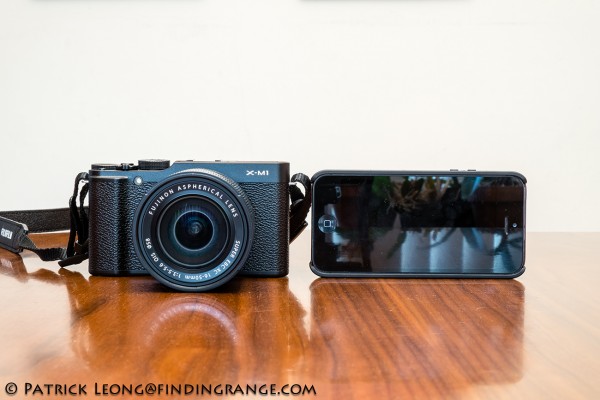
↑ To give you a sense of size, I thought I’d compare the X-M1 with my iPhone.
However, unlike the higher end X Series cameras, the X-M1 lacks the analog controls for aperture and shutter speed. But again, this camera is not necessarily designed for just pure enthusiasts; it’s designed for a larger audience, which include people who are either just starting out in photography or people just want a simple, easy to use camera that can produce excellent results on vacation or hanging out with some friends. There are many X Series users who buy the X-Pro1 and X-E1 because of the analog features like the shutter speed dial, and the manual aperture adjustments. But this camera is designed to be easy and fun to use; it’s designed to be consumer friendly, and for this class of camera, it’s perfectly acceptable and in league with its competitors. It’s also worth mentioning that the aperture and shutter aren’t too difficult to adjust.
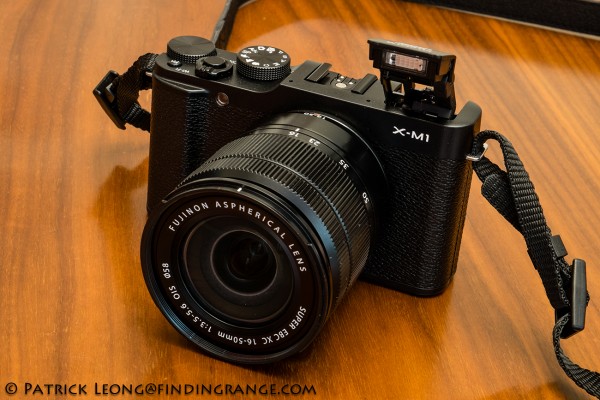
↑ The Fuji X-M1 has a pop up flash similar to the X-E1.
Fujifilm X-M1 Tilt Screen:
Unlike other X Series cameras, the Fuji X-M1 does lose one critical feature that most X Series users value greatly about their cameras: the viewfinder. What replaces the viewfinder is a 920K-dot tilt LCD screen. There are benefits to this: For instance, the size of the body has been reduced. Plus, for the most part, the screen is sharp, clear, and bright. The tilt function also has a wide range of travel making it easy to shoot in all different positions, especially at waist level.
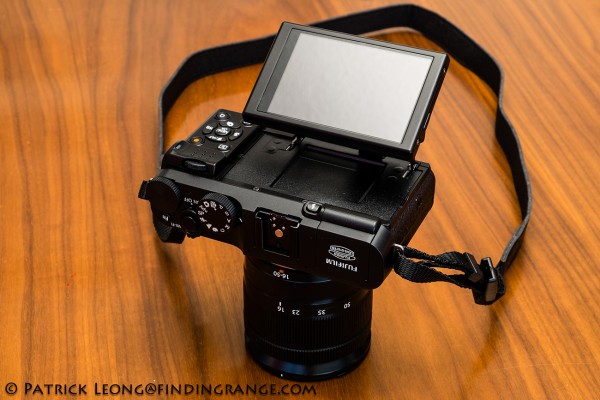
↑ Some will love the tilt screen but personally, I’d prefer a viewfinder.
For this class of camera, a viewfinder might not be such a major deal breaker. However, I can’t help but think it kind of goes against the X Series gestalt by not having a built in viewfinder. When Fuji came out with the X100 or even the X-Pro1, they made a big deal about the viewfinder (hybrid viewfinder no less). So for some, this might deter them from buying this camera but for the market that this camera is trying to appeal to, I don’t think that it will make that much of a difference. It really depends on what you’re looking for in a camera. But keep in mind that there’s no optional EVF attachment for the X-M1. But in a way, that makes sense since the price of the X-M1 and an optional EVF would probably cause the X-E1 unwanted competition.
Also, since this X-M1 only has an LCD screen, a touch screen would have been a nice feature to have in this camera. Picking focus points would be a lot easier along with many other functions. Even being able to take pictures with a press of a finger like the OM-D would be a nice touch for a camera like this.
XC 16-50mm F3.5-5.6 Kit Lens For The Fujifilm X-M1:
If you decide to purchase the X-M1, you have a choice of just getting the camera body or getting the camera packaged with the XC 16-50mm F3.5-5.6 lens. It’s a good lens but keep in mind that it does not match the level of build quality that many have come to expect from the XF lenses. It’s solid but a lot of the lens is made out of plastic including the lens mount. Also, the zoom ring is not as smooth as XF 18-55mm lens, and it does not have an aperture ring. But the size of the lens makes it a great match with the X-M1. You really have to see the lens in person because it’s smaller than it looks in the photos.

↑ The Fuji XC 16-50mm F3.5-5.6 with the lens hood attached.

↑ The lens mount on the XC 16-50mm lens is plastic.
I think for a lens that costs $100 when purchased with the X-M1 kit, you’re getting a great deal. It’s has Optical Image Stabilization (OIS), it’s plenty sharp, and it focuses quickly. If you’re new to the Fuji X Series, and you don’t want to spend a few hundred bucks for a lens because you just bought a new camera body, this lens will definitely fit the bill. It’s a great starter lens, and if you only wanted one lens for general purposes like going on vacation, and you don’t want to fuss about with several lenses, this is also a great choice.
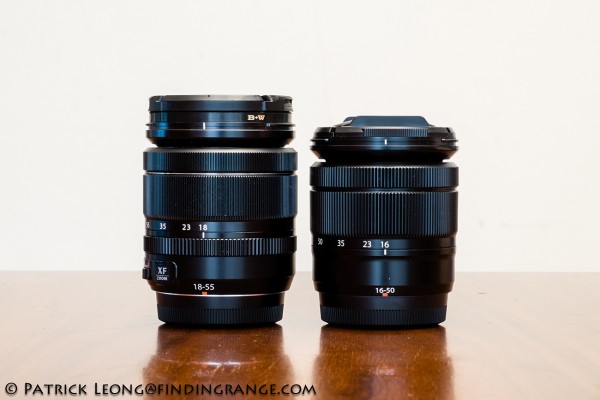
↑ Here’s a photo with the XF 18-55mm next the the XC 16-50mm to give you a sense of size.
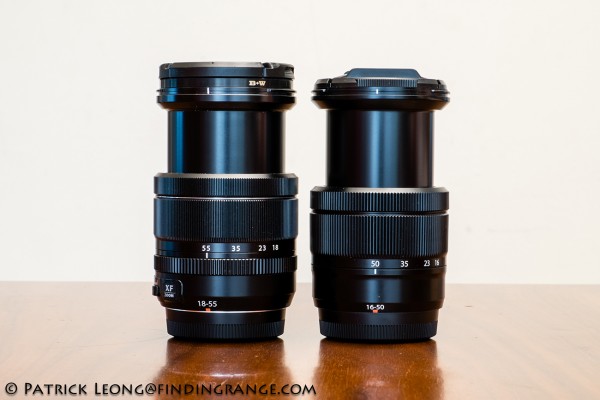
↑ Here are both lenses zoomed out.
For the enthusiast oriented, this lens may or may not be for you depending on what you need. Optically, it’s a great lens, especially for the asking price, and it’s actually one of the better kit lenses that I’ve shot with. But like many kit lenses in this price range, it’s slow. Personally, I got used to using fast glass, and when I was using this lens, I really started missing the couple of extra stops that my other lenses provide. For instance, one day, I decided to go to the NY Aquarium, and I brought the X-M1 along. I cranked the ISO up to 3200, and it still wasn’t fast enough for a lot of situations. While F3.5 isn’t so bad, when you want to zoom the lens to 50mm, you’re shooting at F5.6 or smaller. In terms of bokeh, while the out of focus area is smooth, you’re not going to get anything near the XF 35mm F1.4 or even the XF 60mm F2.4 lens.
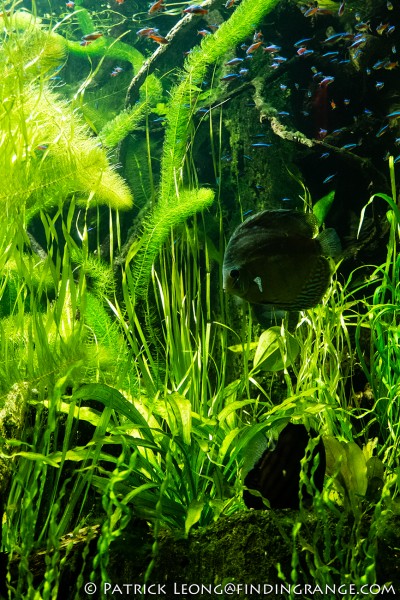
↑ Here’s a photo taken at 3200 ISO.
If this was the first time that I was buying into the X Series system, I’d buy this lens because it definitely performs well for $100. It’s size is also perfect for the X-M1. But as of now, I already own the XF 18-55mm F2.8-4 R lens, and that lens is a fantastic piece of glass. Plus, the focal lengths are pretty close, and the XF 18-55mm is a faster. While I think the XC 16-50mm lens is a fantastic deal for its price, I didn’t use it as much as I thought I would. The truth is, I preferred using my XF collection, and every time I tried to force myself to use the XC 16-50mm, I ended up popping one of my XF lenses on the X-M1 instead.
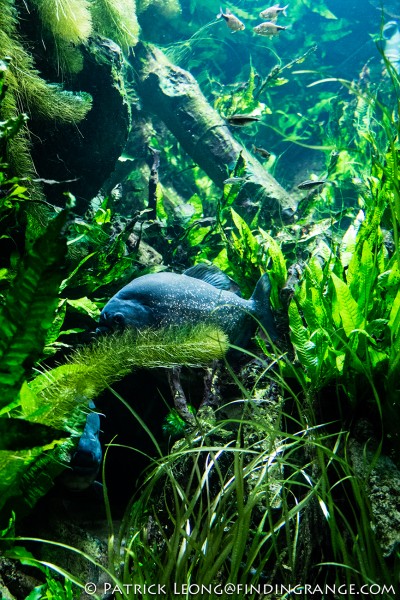
↑ I personally like what the XC 16-50mm produces. Image quality is very nice but be prepared to push the ISO up a bit in certain situations. This photo was taken at 3200 ISO.

↑ The lens focuses pretty fast and accurate as well. Those “planes” were swirling around pretty fast.
Fujifilm X-M1 Image Quality:
Images is one of the main areas where this camera shines. With the same 16.3 MP X-Trans sensor as the X-Pro1 and the X-E1, the Fuji X-M1 has essentially the same image quality as both those higher end models. In other words, the X-M1 produces fantastic image quality. Colors are accurate, details are exceptional, and photos are crisp. Dynamic range is also excellent. There’s plenty of information in the highlights and shadows to pull out. The X-M1 is definitely capable of producing excellent photos, and resolving plenty of detail, especially when combined with Fuji’s excellent lenses.
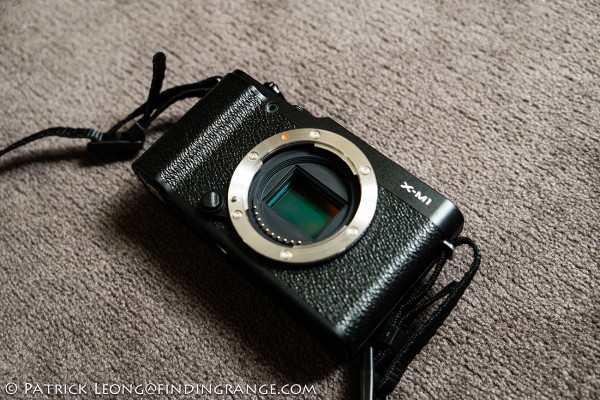
↑ The 16.3 MP X-Trans sensor.
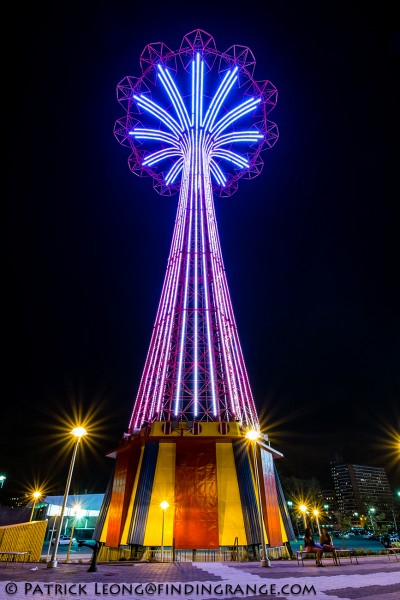
↑ The X-M1 is a great way to get into the X Series interchangeable lens system, and it’s great that it’s compatible with the other lenses, such as, the Zeiss Touit 12mm F2.8, which was the lens I used to take this shot.
I think it’s pretty amazing too because you’re getting some remarkable image quality from a camera that’s technically not even enthusiast oriented. This camera is designed for the masses. What a great way to get someone into the X Series system: make a cheaper camera, put in the sensor from their flagship, and make the lenses from their flagship camera compatible. Once they get addicted to the image quality, they’ll be Fuji X Series users for life :).
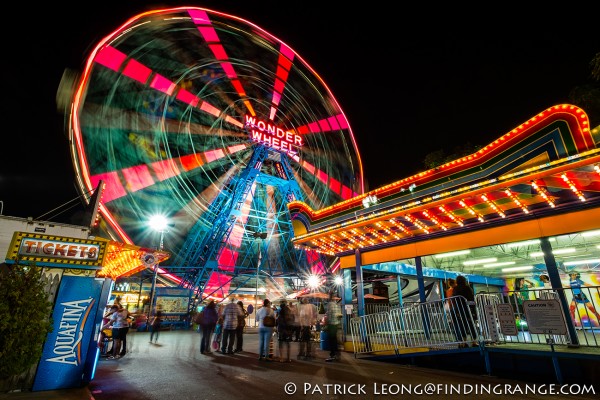
↑ Here’s another shot with the Zeiss Touit 12mm F2.8.

↑ Here’s a photo taken with the X-M1 and XF 60mm F2.4 combo.
Fujifilm X-M1 High ISO Capability:
Just like the other X Series models, the X-M1 has brilliant high ISO capability. Obviously, 200 ISO is excellent but I believe 6400 ISO is certainly useable. Color saturation is still pretty decent at the higher ISO range. I feel confident pushing this camera up to 3200 ISO or even 6400 ISO because image quality is excellent. Here are some examples shot at different ISO settings:

↑ Here’s a photo taken at 3200 ISO with the XC 16-50mm F3.5-5.6 lens.
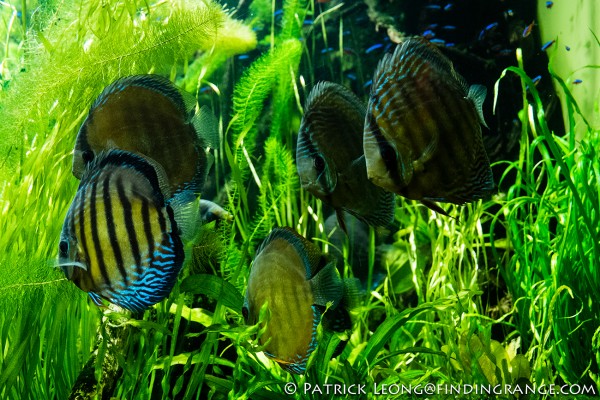
↑ Here’s another photo taken with the same ISO settings and lens.

↑ Here is a shot taken with the Zeiss Touit 12mm F2.8 at 1250 ISO.

↑ Here’s another shot taken with the Zeiss Touit 12mm F2.8 at 1000 ISO.
Fujifilm X-M1 Film Simulations And Advanced Filters:
The Fuji X-M1 can shoot in jpeg and RAW just like its siblings. The jpegs are very decent, and this is a big deal for a camera like this. Again, this camera is more consumer based, so not everyone will be shooting in RAW. However, the fact that the X-M1 does shoot in RAW is a good thing because someone who buys this camera may start out by shooting jpegs but as they gain more experience, they’ll give the RAW files a try.
But if you have no intentions of shooting RAW, as I said before, the jpeg files are great. There’s also plenty of Film Simularions and Advanced filters to choose from. Below are a list of each filter, and a photo to accompany it.
Film Simulation Mode For The Fujifilm X-M1:

↑ Provia/Standard

↑ Velvia/Vivid

↑ Astia/Soft

↑ Monochrome

↑ Sepia
Advanced Filters For The Fujifilm X-M1:
↑ Miniature
↑ Toy Camera
↑ Dynamic Tone
↑ High Key
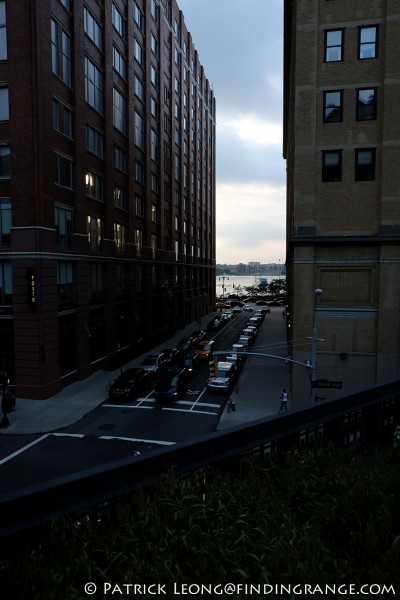
↑ Low Key

↑ Pop Color
↑ Partial Color (Red)
↑ Partial Color (Blue)
↑ Partial Color (Orange)
↑ Partial Color (Purple)
↑ Partial Color (Green)
↑ Partial Color (Yellow)
Manual Focus With The Fujifilm X-M1:
Manually focusing with the X-M1 is a breeze particularly because you can use the focus peaking feature. As of now, there is only one color to choose for focus peaking: white. For me, I see it perfectly…for some, maybe another color would be better. I should also mention that the manual focusing seems to be easier to perform with the X-M1 than the X-E1 and X-Pro1. Quite frankly, it’s easier to see the focus peaking doing its job. I popped one of my M lenses on the X-M1 with my M Mount Adapter, and it works perfectly. It’s slightly front heavy but I can focus it pretty quickly.
Fujifilm X-M1 Built-in Wi-fi:
For some, the wi-fi ability on the X-M1 will be an important feature. Basically, you download the free Fujifilm Camera Application to your smartphone or your tablet and use that app to download images from your camera to your smart device. You can also browse through images on the X-M1 through your smart device, and download location data from phone or tablet and tag your photos with the data. There is no password protection, so some will like that because it’s less fuss, while others will want more security.
Fujifilm X-M1 Pros and Cons:
Fujifilm X-M1 Pros:
- Attractive (looks like a mini X-E1).
- Small.
- Very light.
- Well built.
- Tilt screen.
- Decently priced: A great way for someone to enter and experience the X Series.
- Excellent kit lens for the price.
- Same great 16.3 MP X-Trans sensor as its older siblings giving the X-M1 fantastic image quality.
- Uses the same lenses as the higher end models.
- Great high ISO capability.
- Built-in Wifi.
- Great second body for existing X Series users.
- Great camera for consumers who want an easy camera to operate but also want exceptional picture quality.
Fujifilm X-M1 Cons:
- A lot more plastic is used in its construction vs. the higher end models.
- No touch screen.
- No viewfinder.
- No ability to attach an external EVF.
- Traditional analog manual controls absent in favor of exposure mode dial.
- Price can feel too close to the price of the X-E1 for some.
Fujifilm X-M1 Verdict:
I can understand some people dismissing the Fuji X-M1 simply because it does not offer features, such as, a viewfinder or traditional manual controls like the higher end X Series bodies. In some ways, I felt the same way but after using it and experiencing what it can do, my opinion has changed mainly because this camera is so small yet it still offers essentially the same image quality as its more expensive siblings. Yes, there are other great cameras out there that offer exceptional image quality as well. Some will offer more features or at least different features. But if you prefer the Fuji system or if you have a bunch of Fuji lenses, this would make an excellent second body. In use, this camera feels great, and again, image quality is brilliant because it uses the same X Trans sensor as the flagship, X-Pro1. For those who don’t own any Fuji equipment but want to see what all the Fuji buzz is about, this is a great way to enter the game. Plus, for an extra $100, you can get a great lens to go with your newly acquired X-M1. If you’re not an enthusiast, the X-M1 is a great choice for you as well because it’s an easy, straightforward camera to use but it will also offer you DSLR like image quality.

↑ This photo taken with the XF 60mm F2.4 lens.

↑ Here’s a photo of Brighton Beach taken with the Zeiss Touit 12mm F2.8.
Overall, this is a fantastic little camera. Before I had a chance to use it, I honestly wasn’t thinking I would enjoy it much. I don’t work for Fuji, and I don’t work for Leica, so if I tell you I really like something, I really do. If you’re on the fence about the Fuji X-M1, I urge you to go to a reputable camera dealer, and play with it. It does have its negatives, and I’ve mentioned the ones that I take issue with. But there are a lot of positives…the main ones for me being the small size, the X-Trans sensor, and the excellent Fuji lenses. It’s really a great way to get into the X Series interchangeable lens system without breaking the bank.
If you’re considering buying the X-M1, and my review helped you decide, please help support me by purchasing from one of the links below. Thank you for your support!

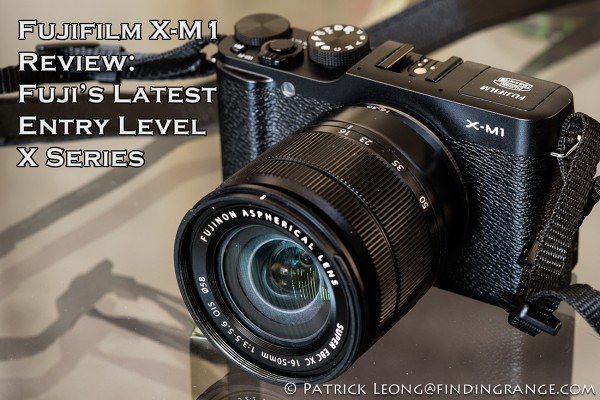



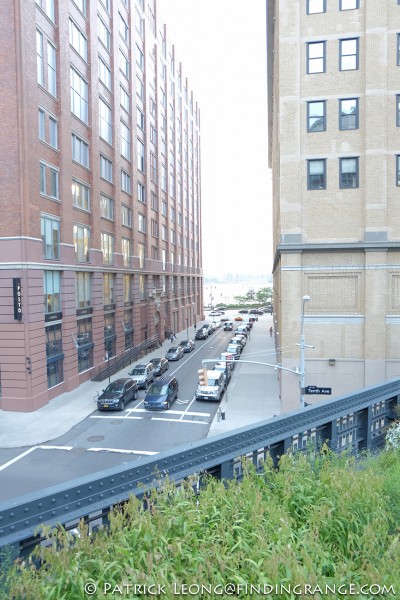
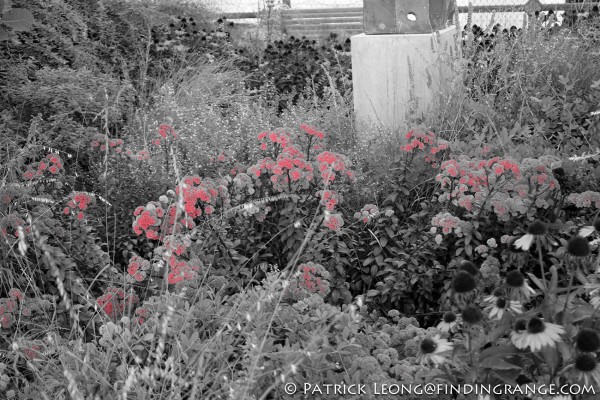
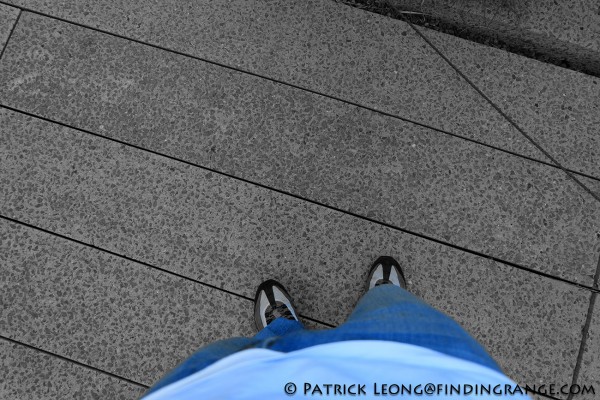
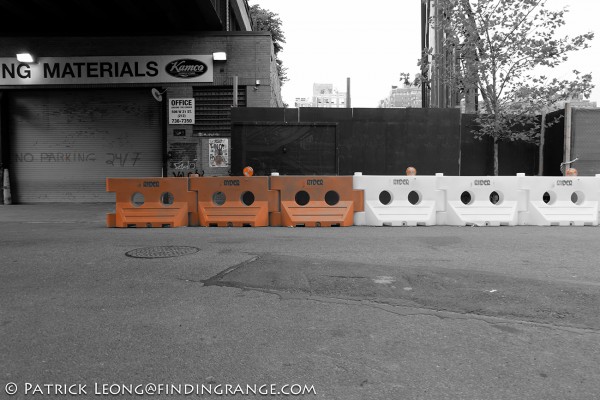
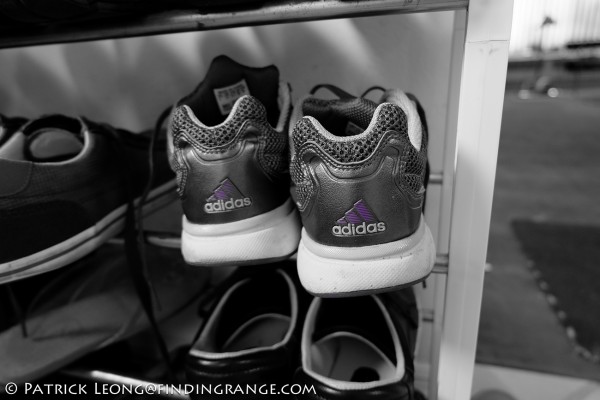


The colour and the tone from your image are awesome,such rich and attractive colour, must be the power of raw :)….especially the ferris wheel and the nathan sea food restaurant,awesome photo my friend…maybe is time to do some raw
Hey Meng,
Thanks! That is really kind of you to say! The jpegs you’ve been taking on your blog look amazing! I love what you’re doing with those jpegs.